Have you wondered, “Can you freeze cabbage?” after struggling to use up a whole head of the delicious cruciferous vegetable before it starts to wilt? You absolutely can freeze cabbage. Whether it’s napa, savoy, green or red, the steps are straightforward, and this guide will show you how to do it the right way.
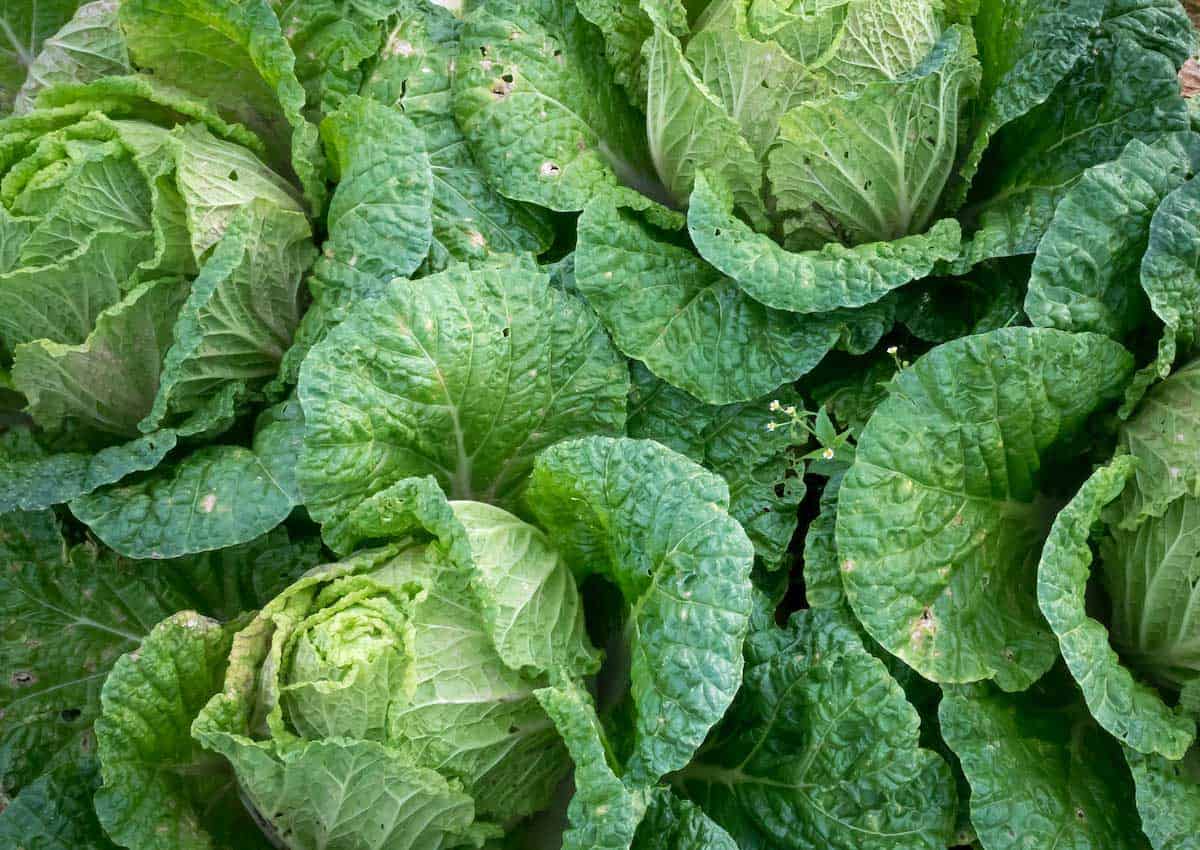
Benefits of freezing vegetables
Freezing fruits and vegetables is a valuable preservation method that offers several benefits.
Freezing preserves freshness, nutrition and natural flavors. Whether it’s freezing corn on the cob, avocados or zucchini, it’s an excellent way to enjoy fresh vegetables year-round.
Additionally, freezing minimizes food waste and is cost-effective, allowing bulk purchases during lower-priced seasons. It’s also a great option for large veggies like cabbage that produce more than enough for one recipe. With the proper techniques detailed in this guide, you don’t have eat cabbage until you’re sick of it just to use it up before it starts to go bad.
With this convenient approach, you can freeze it at it’s peak freshness and enjoy it later in recipes like a cabbage and sausage skillet or fried cabbage and bacon side dish.
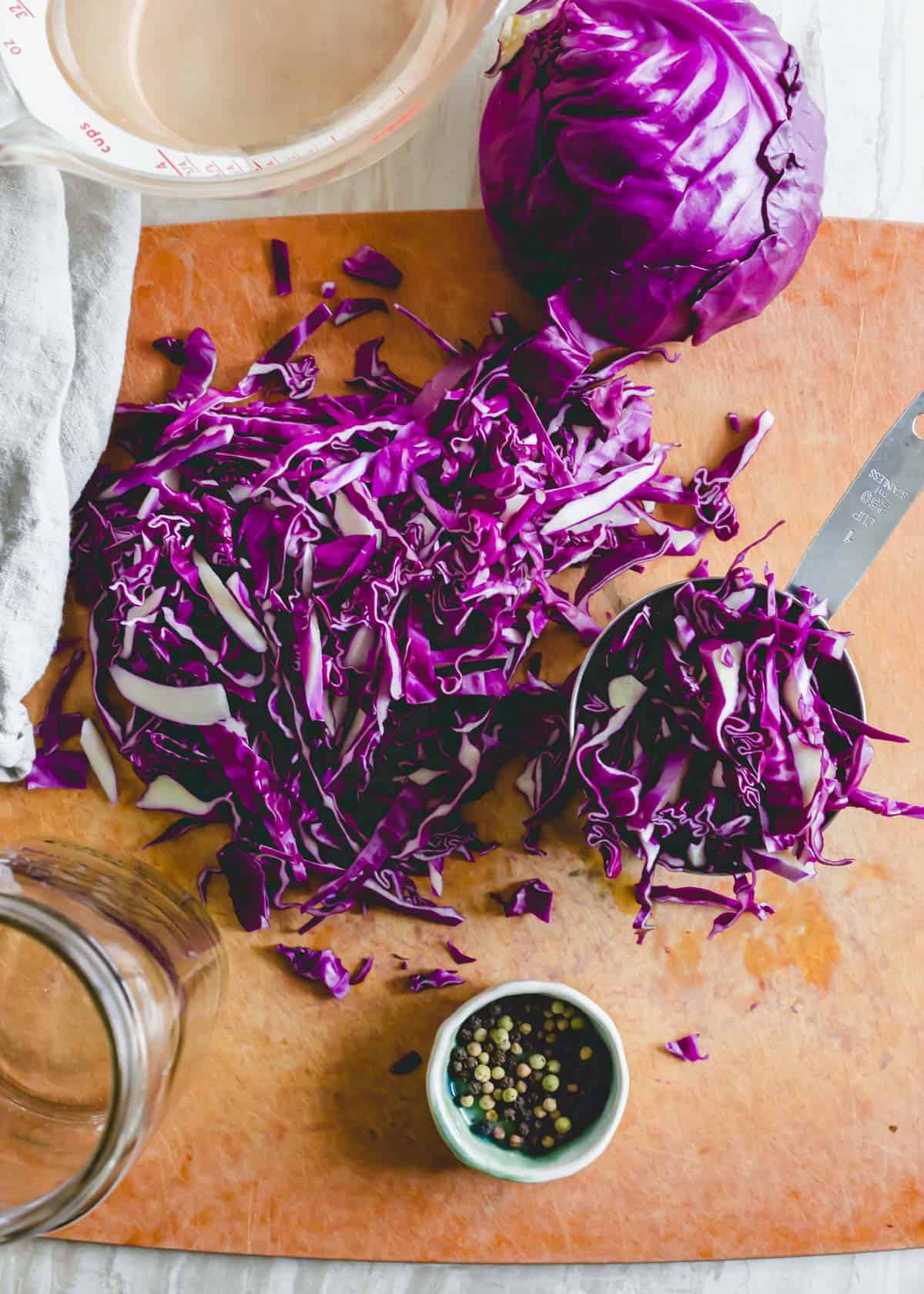
How to freeze cabbage
Freezing cabbage preserves its freshness and nutritional value for an extended period. If done properly, frozen fresh cabbage will last for a few months and will undoubtedly come in handy in a pinch for future recipes.
Here’s the step-by-step guide on how to do it:
- Clean the cabbage: Start by thoroughly washing the cabbage under cool, running water. Remove any outer leaves that might be damaged or wilted.
- Chop, shred or separate leaves from the cabbage: Decide how you want to use the frozen cabbage later. Cabbage can be quartered, chopped, shredded or cut into bite sized pieces before freezing. This will vary depending on whether you’re making coleslaw, a pork and cabbage stir-fry recipe or something else. You can also choose to separate the cabbage leaves from each other and freeze them individually.
- Blanch the cabbage: Blanching is a crucial step to stop enzyme activity that can cause loss of color, flavor and nutrients during freezing. Bring a large pot of water to a boil and blanch the cabbage for one to two minutes, depending on the size of the pieces.
- Shock in ice water: Immediately transfer the blanched cabbage into a bowl of ice water to halt the cooking process. This process will help retain its crispness and color.
- Drain and dry: After shocking in the cold water, drain the cabbage thoroughly and pat it dry with paper or cloth towels to remove the excess moisture.
- Pack for freezing: Divide the cabbage into portions that you will likely use in one go. Use airtight freezer bags (we love Stasher bags for this purpose) or containers and remove as much air as possible before sealing.
- Label and date: Label the storage bags or containers with the date of freezing to help keep track of their freshness.
Stasher bags are my favorite refrigerator, freezer and pantry reusable storage bags. They're durable, dishwasher safe and reduce plastic use.
“When I have leftover cabbage, I cut it into large chunks or quarters and blanch it in a salty hot water bath for a minute. Then, I transfer it to a bowl of cold water. Drain the cabbage and then let it dry on a clean towel. Before freezing it, I like to shred the cabbage into small pieces so it’s ready to add to stir-fries, soups or casseroles. Finally, I store the dried cabbage in freezer bags.”
— Jere’ Cassidy, One Hot Oven
Can you freeze cabbage without blanching?
Yes, you can freeze cabbage without blanching, but blanching is recommended as it helps maintain its color and flavor while freezing. Blanching also stops enzyme activity that can lead to the breakdown of the cabbage over time. It’s an important step when making garlic basil wax beans or the upstate NY staple, Utica greens side dish.
Skipping the blanching process minimizes the time needed to freeze your cabbage, which is a plus.
If you choose to freeze cabbage without blanching, keep in mind that there may be changes in color, texture and taste compared to blanched frozen cabbage.
To freeze cabbage without blanching, follow these steps:
- Clean the cabbage: Wash the cabbage thoroughly under cool, running water and remove any damaged or wilted outer leaves.
- Chop or shred the cabbage: Decide how you want to use the frozen cabbage later and chop it into bite-sized pieces or shred it.
- Dry the cabbage: Use a paper towel to pat the cabbage dry and remove any excess moisture. Excess moisture can lead to freezer burn and affect the quality of the frozen cabbage.
- Pack for freezing: Divide the cabbage into portions you will likely use in one go. Use airtight freezer bags or containers and remove as much air as possible before sealing.
- Label and date: Label the bags or containers with the freezing date to help keep track of their freshness.
My Pro Tip
Recipe Tip
Freeze cabbage in various cuts so you have options when using it in recipes later. Red cabbage sauerkraut or Irish coleslaw is best using shredded cabbage whereas Instant Pot cabbage soup is better with larger chopped pieces.
Can you freeze cabbage steaks?
Cabbage steaks are one of the crispiest and most delicious air fryer side dishes that we enjoy frequently with a variety of meals. Luckily, cabbage can be frozen in this form as well.
To freeze cabbage steaks, slice the cabbage into steaks and follow the raw freezing method. They won’t hold their shape well if blanched first.

How long can you freeze raw cabbage?
When stored at 0 F or below, frozen cabbage can retain its quality for about eight to 12 months. Though, for the best taste and texture, it’s recommended to use it within six to nine months. After this time, while it may still be safe to eat, the quality will decrease.
How long can you freeze cooked cabbage?
Cooked cabbage can maintain its quality for about two to three months when stored in the freezer.
Once cooked, allow it to cool to room temperature, then follow the same packing and freezing steps as mentioned earlier for fresh cabbage.
How to thaw frozen cabbage
Thawing may or may not be necessary depending on how you plan to use the frozen cabbage. For instance, if shredded and the intention is to add to a soup, stew or stir fry, there’s no need to thaw the cabbage first.
However, if you plan to use cabbage leaves to make cabbage rolls, cabbage quarters to roast, cabbage steaks to air fry or chopped cabbage for a red cabbage and apple coleslaw, you’ll want to thaw the frozen cabbage under refrigeration the night before.
Other ways to use frozen cabbage
When properly frozen, there’s unlimited uses for frozen cabbage and they go far beyond coleslaw. Sheet pan pork chops with cabbage and apples is an easy fall dinner that everyone will love.
It can be tossed into a quick homemade shrimp lo mein to rival takeout on a busy weeknight, pickled to throw on tacos or add some to a creamy dijon egg salad for some crunch.
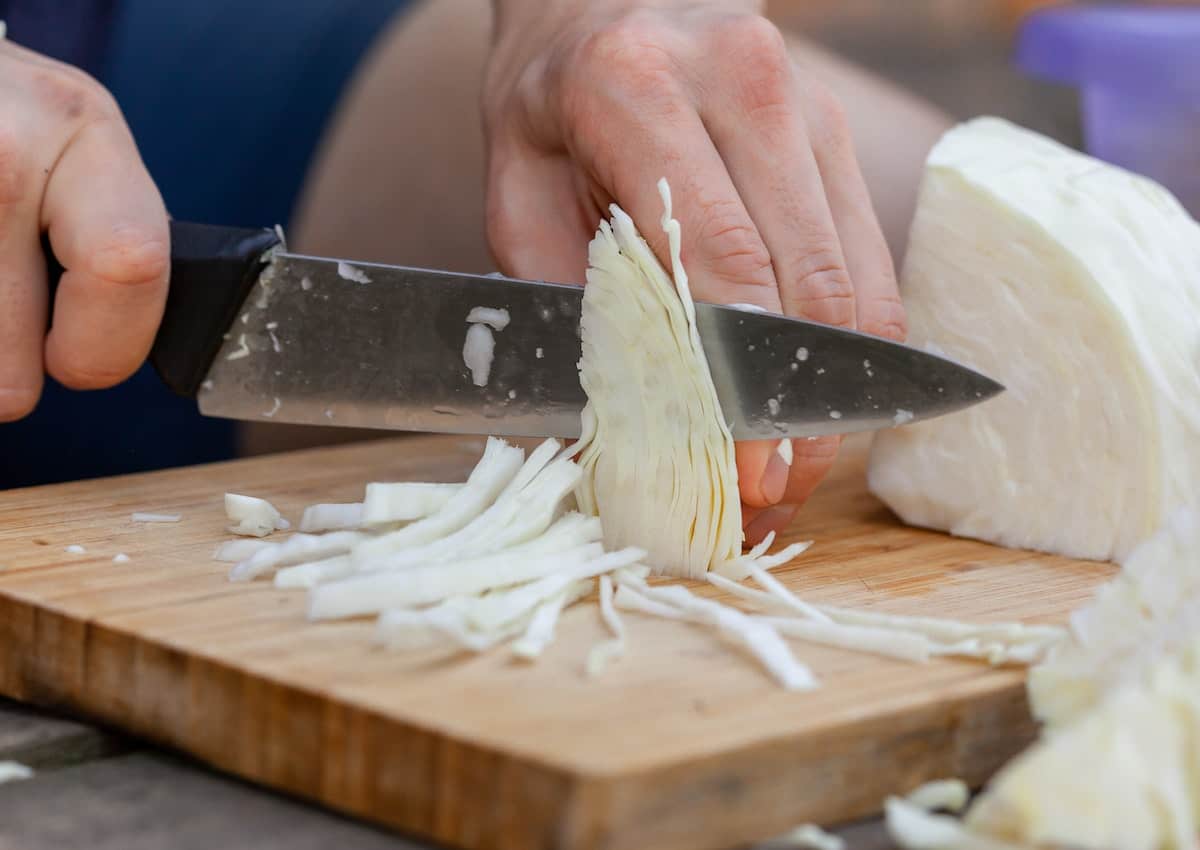
Final thoughts
Freezing cabbage is a simple and effective method to preserve its freshness and nutritional value for an extended period.
You can successfully freeze cabbage with the easy-to-follow steps outlined in this guide. Whether you choose to blanch the cabbage or freeze it without blanching, both methods offer advantages. Blanching helps maintain the cabbage’s color, flavor and texture, while freezing without blanching provides a quicker process with some potential changes in the final result.
So, the next time you wonder, “Can you freeze cabbage?” you can confidently do it right.
How to Freeze Cabbage
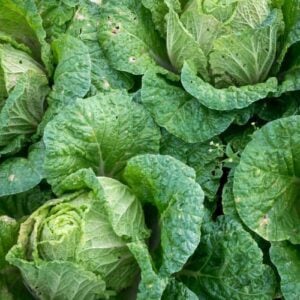
Ingredients
- 1 head of cabbage
- sharp chef’s knife
Instructions
- Clean the cabbage under cool running water and remove any wilted or damaged outer leaves.
- Cut cabbage as desired — separate individual leaves, shred, chop, quarter or slice into steaks
- If blanching, bring a large pot of water to a boil and blanch the cabbage for 1-2 minutes. Transfer the cabbage to a large bowl of ice water to shock it and stop the cooking process. Drain onto paper towels to absorb excess moisture.
- Pack the cabbage into freezer safe bags or containers, label and date accordingly and transfer to the freezer.
- Cabbage can also be frozen without blanching and transferred directly to the freezer after chopping.
Nutrition
Nutrition information is automatically calculated, so should only be used as an approximation.
This article originally appeared on Food Drink Life.
Gina Matsoukas is an AP syndicated writer. She is the founder, photographer and recipe developer of Running to the Kitchen — a food website focused on providing healthy, wholesome recipes using fresh and seasonal ingredients. Her work has been featured in numerous media outlets both digital and print, including MSN, Huffington post, Buzzfeed, Women’s Health and Food Network.


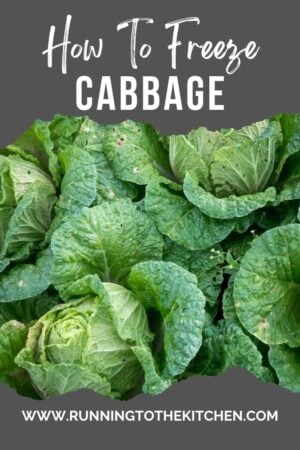
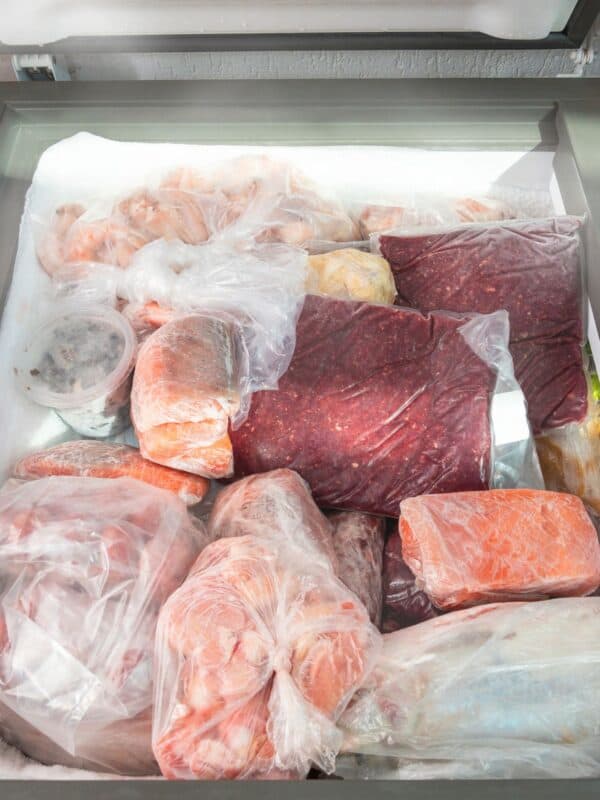

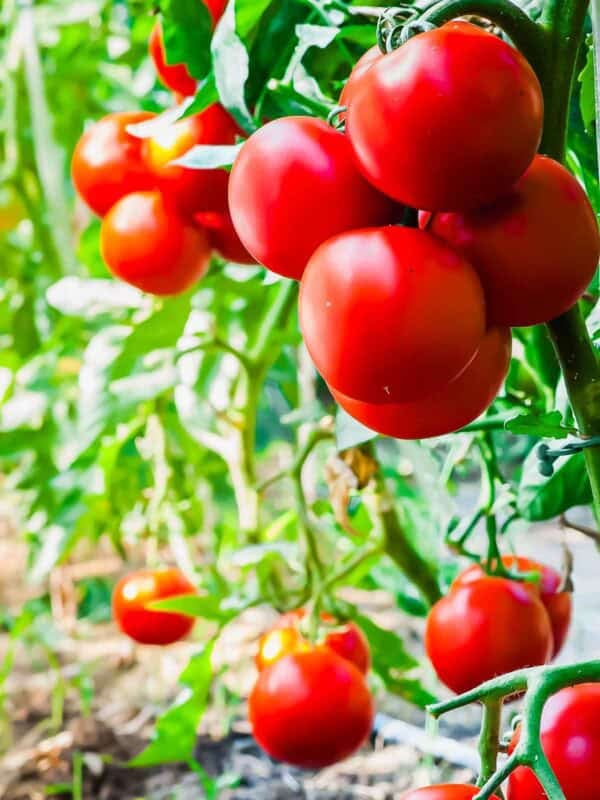
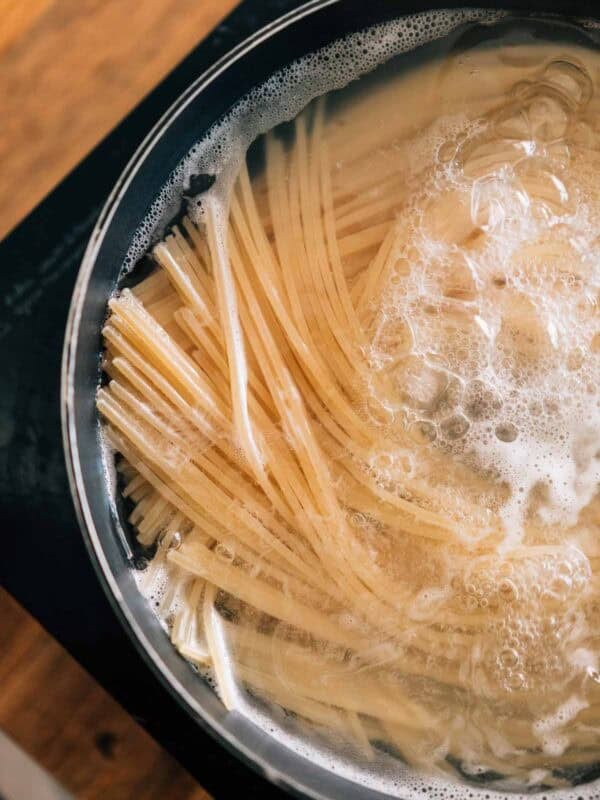








This is such a great idea. I often get cabbages in my veg box and can’t use them all up.
I would never think to freeze cabbage but it’s a great idea as I don’t always want to eat cabbage 3 days running to stip ot from going to waste!